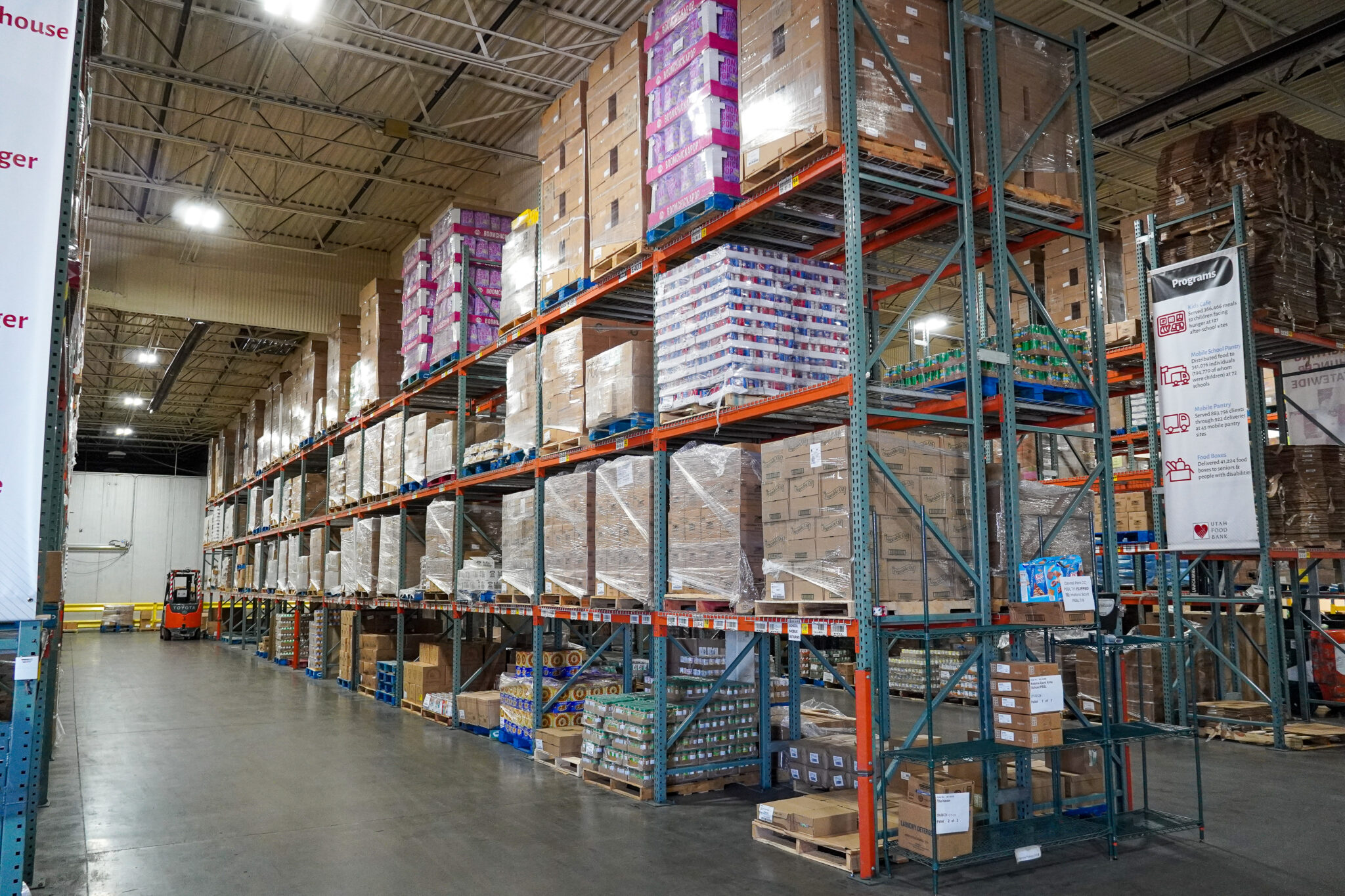
Collection and Distribution
The support we received from the community last year helped us collect and distribute the equivalent
of 58 million meals statewide.
Getting food to all 29 Utah counties requires considerable resources and infrastructure. To tackle this feat, we rely on strong relationships with statewide and national manufacturers, retailers, packers, growers, transportation companies, government agencies, and other organizations.
These relationships, coupled with our ability to fundraise on a state and national level, allow us to distribute food free of charge to our 309 partner agencies throughout Utah who play the key role of getting food directly into the hands of Utahns facing hunger. Our resources include four large distribution centers, four pantries, a transportation fleet, and our valuable affiliation with Feeding America.
Where do we get our food?
Last year, we collected 73 million pounds of food through a variety of sources:
- Grocery Rescue (31%): Partnerships with local grocery retailers give us access to much-needed fresh food items that are nearing expiration dates, leveraging what would otherwise be food waste into a vital tool to alleviate hunger in Utah. Last year, we rescued over 22 million pounds from 424 grocery stores across the state, thereby keeping millions of pounds of food out of local landfills.
- National Commercial Donations (39%): As a partner food bank of Feeding America, we have access to food from national vendors, producers, and other food banks across the country. Often, we can obtain these items for either free or just the cost of transportation thanks to our partnerships with local transportation companies.
- Government Commodities (18%): Utah Food Bank is a distributor of USDA commodities allotted for programs and agencies that provide emergency food assistance to Utah residents.
- Local Commercial Donations (7%): Local commercial food distributors include growers, manufacturers, and retailers. Donated food may consist of seasonal, surplus or discontinued items, or food in damaged containers.
- Food Drives (2%): Utah Food Bank collects approximately 1.7 million pounds annually from community food drives that are often coordinated statewide with local agencies. This food is crucial because it provides a variety of food that we are often unable to offer from commercial donations or purchased food.
- Purchased (3%): On occasion, Utah Food Bank purchases specific food items to help fill in gaps in what we receive through other donation sources.
Where does our food go?
Last year, Utah Food Bank distributed 69.6 million pounds of food, the equivalent of 58 million meals, to Utahns facing hunger across the state.
Emergency Food Assistance: Emergency Food Assistance is the primary method by which we distribute food to children, seniors, and families facing hunger throughout the state. Food is collected in our warehouses, then distributed through our statewide network of 309 partner agencies. We are one of only a handful of food banks in the country who distributes food free-of-charge to our partner agencies. Find your local food pantry here.
Mobile School Pantry: Utah Food Bank’s Mobile School Pantry program complements both school meal programs and our Kids Cafe program. It provides a cost-effective monthly food distribution point for children and their families at the end of the school day in a safe and trusted environment—their local school. Last year, through distribution at 70 school sites, we were able to reach 436,190 individuals, 247,826 of whom were children.
Kids Cafe: Through our Kids Cafe program, we provide free evening meals and snacks in partnership with after-school sites at local elementary schools, Boys & Girls Clubs, and community centers. During the summer months, when kids lose access to school meals, this program also distributes free meals to children under 18 at a variety of sites across the state. Last year, we served 482,257 meals to children at risk of hunger at 124 after-school and summer feeding sites through this program.
Food Box Programs: Utah Food Bank provides free, monthly food assistance to homebound seniors and people with disabilities through our CSFP and UFB Food Box Programs. Each food box contains approximately one week’s worth of non-perishable food, plus as much fresh food as available. Last year, 36,711 boxes were distributed, helping seniors and people with disabilities who often must choose between food on their tables and life-saving medicines.
